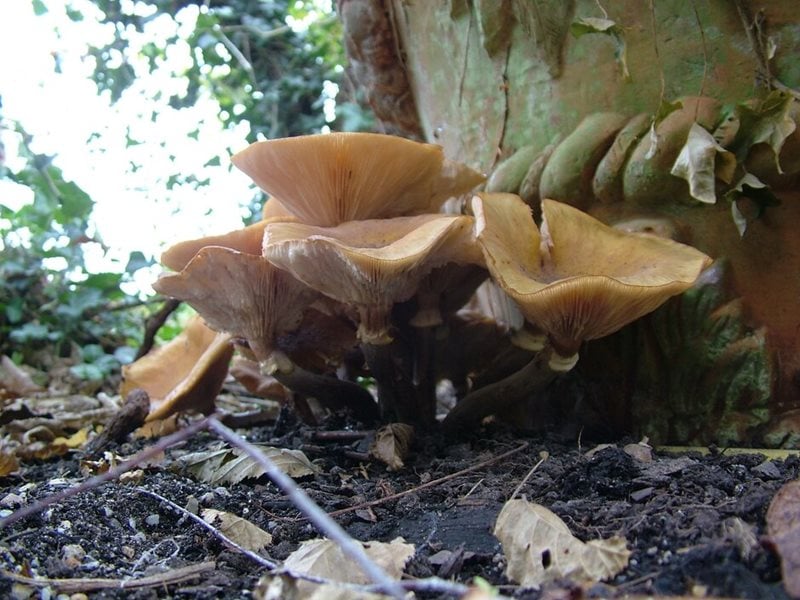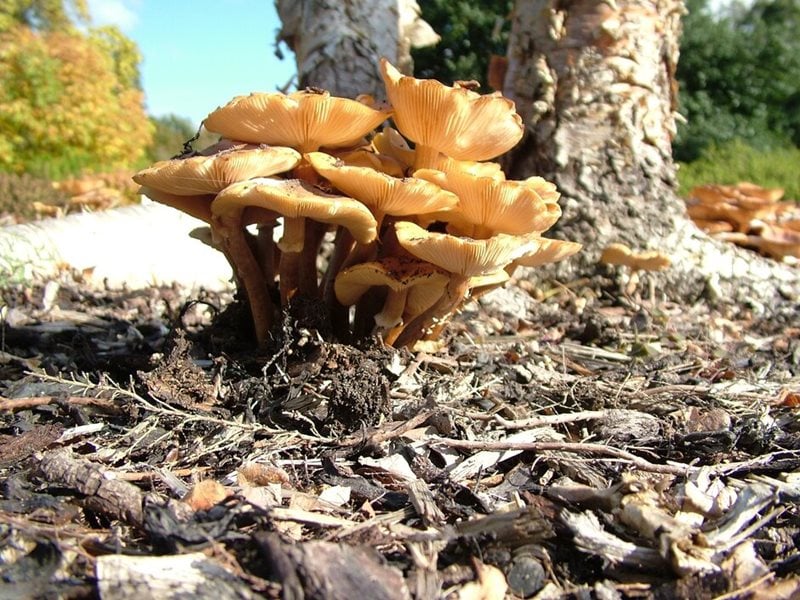New research reveals how gardeners can fend off the UK’s number one garden disease
Popular garden plants and their susceptibility to honey fungus are highlighted in a new
honey fungus host plant list. The list advises gardeners on plants to avoid if the disease is present, or a threat, to their plot.
Honey fungus, characterised by honey-coloured toadstools, often appears at the start of autumn. The fungus attacks and kills the roots of many woody and perennial plants while spreading through root systems and infecting nearby plants. Any infected plants must be removed – but even then it’s extremely hard to eradicate the disease.

A team of RHS pathologists compared more than 5,000 confirmed records of the disease with results of a previous study into plant susceptibility by the University of California. The work categorised UK garden plants based on their risk of contracting the disease.
Senior Plant Pathologist, Matthew Cromey said: “The RHS has long advised on what plants might be best avoided if honey fungus is a known problem on your plot but this new research, for the first time, also accounts for a plant’s popularity in gardens and therefore the disease's likely true impact.”
Popular plant susceptibility
The three categories – low, moderate and high susceptibility – were assigned to plants based on how often the disease was reported on them, adjusting the score to account for their popularity in UK gardens based on RHS data.
High susceptibility
- Privet
- Lilac
- Leyland Cypress
- Viburnum
- Hawthorn
- Eleagnus
Moderate susceptibility
- Apple
- Maple
- Prunus
- Magnolia
- Rose
- Hornbeam
Low susceptibility
- Olive
- Yew
- Laurel
- Honeysuckle
- Box
- Lavender
Plants in the Myrtales order of flowering plants – including myrtle and fuchsia – and Ericales – including camellia and heather - tended to have low susceptibility, while those in the Saxifragales – such as liquidambar and witch hazels - and Fagales – birch and sweet chestnut - were mostly highly susceptible.

Honey fungus has topped the RHS annual pest and disease ranking for 23 years and has been exacerbated in recent years by warmer, drier summers that increase the stress levels of plants and make them more susceptible to attack from the disease.
Matthew said: “Following the planting advice isn’t a guarantee against the disease but a sensible precautionary measure akin to practising good plant hygiene.”
More information and advice on managing the disease can be found on
our honey fungus advice profile.

